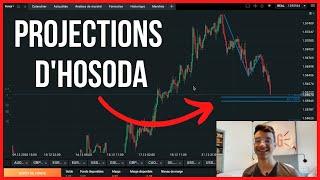Marketing has turned into omnichannel approach in which you drive traffic and sales through multiple channels, not just one. And in marketing, they talk about this thing called the rule of seven, which reinforces omnichannel. What the rule of seven is about is when someone hears or sees or interacts with your brand seven times, they're more likely to convert in a customer, evangelize your brand, love it, tell people about it and that's why you want to take an omnichannel approach because it's hard to get in touch with one person through the same channel over and over again.
RESOURCES & LINKS:
____________________________________________
Ubersuggest: https://neilpatel.com/ubersuggest/
____________________________________________
But there's an issue When you start leveraging multiple channels which one is responsible for the conversions? Is it Google? Is it Facebook? Is it Instagram, Twitter, email? How do you know which channel is producing you the most ROI?
Well, there's the issue which how each of these platforms from Google to Facebook report on conversions. Let's say someone comes to your website from an organic LinkedIn post, then they subscribe to your newsletter. You then send them a few emails, they click on some of them, come back to your website At this point, they still haven't bought from you. And then they do a search on Google. They click on your paid ad that's at the top of Google. They go through, they check out your website, maybe even add some props to the landing page or read your services page, but they still don't convert. You then see them coming back to your website because they clicked on one of your tweets or bio in on Twitter. And now they come back to your website and they complete their purchase.
Do you think Google shows that they caused that conversion from, let's call it Twitter or do you think it shows that they were responsible for that conversion and it came from their ad? Of course, they show that it comes from their ad. Facebook and pretty much all paid platforms do the same. If someone clicks on one of these paid ads and they don't convert right away, but then they come back through some other channel, even if they found your website before you did that paid advertising, they'll tell you that they were responsible for that conversion.
There's nothing wrong with this, but you ideally need to attribute your conversion to multiple channels to figure out what's accurately driving you revenue and what isn't. And before I get into how you can do that in Google Analytics, let me break down the common attribution models that you can use.
There's Last Click. This is historically the default that just gives all the credit to the last click before someone converted. Then you have Time Decay. This gives credit based on the time between the interactions. Then you have Linear. This gives equal credit across each step of the conversion path. And then there's Position-Based. This typically gives credit to specific steps in the conversion path, usually the first and the last one. Then you have First Click All the credit from the first interaction, typically used to drive awareness to your website. And then you have Data-Driven. This uses historical data to determine the attribution credit. This model will shift depending on the unique path.
There isn't one right or even wrong approach to use. I typically use Position-Based myself which typically gives credit to the first touch and the last touch. First touch being how someone first found your website and last touch being on what is the last entry source that they came through before they converted. Sometimes people come to your website the first time and they convert right away and sometimes they don't.
But that's why I love using this model because it gives me, Hey, what are the main two drivers of the conversion? Now here's how you adjust your attribution in Google Analytics. First click on admin, then I want you to click on attribution settings. Then click on the model you want to choose. And if you want, you can choose position-based, like me or any other option. Now you'll get a better idea of what is driving your revenue.
Now if you need help with your analytics and more importantly, on how to make better informed decisions from your analytics so you can grow your marketing faster and get a better ROI, check out my ad agency, NP digital where we have a whole data science team that just helps companies with this. If you enjoyed the video, like it, share it, tell people about it and make sure you subscribe. If you have any questions, leave a comment below. I'm here to help you out.
► If you need help growing your business check out my ad agency Neil Patel Digital https://npdigital.com/
►Subscribe: https://goo.gl/ScRTwc to learn more secret SEO tips.
►Find me on Facebook: https://www.facebook.com/neilkpatel/
►On Instagram: https://instagram.com/neilpatel/
https://youtu.be/OtLYIf_NExA
#SEO #NeilPatel #DigitalMarketing
RESOURCES & LINKS:
____________________________________________
Ubersuggest: https://neilpatel.com/ubersuggest/
____________________________________________
But there's an issue When you start leveraging multiple channels which one is responsible for the conversions? Is it Google? Is it Facebook? Is it Instagram, Twitter, email? How do you know which channel is producing you the most ROI?
Well, there's the issue which how each of these platforms from Google to Facebook report on conversions. Let's say someone comes to your website from an organic LinkedIn post, then they subscribe to your newsletter. You then send them a few emails, they click on some of them, come back to your website At this point, they still haven't bought from you. And then they do a search on Google. They click on your paid ad that's at the top of Google. They go through, they check out your website, maybe even add some props to the landing page or read your services page, but they still don't convert. You then see them coming back to your website because they clicked on one of your tweets or bio in on Twitter. And now they come back to your website and they complete their purchase.
Do you think Google shows that they caused that conversion from, let's call it Twitter or do you think it shows that they were responsible for that conversion and it came from their ad? Of course, they show that it comes from their ad. Facebook and pretty much all paid platforms do the same. If someone clicks on one of these paid ads and they don't convert right away, but then they come back through some other channel, even if they found your website before you did that paid advertising, they'll tell you that they were responsible for that conversion.
There's nothing wrong with this, but you ideally need to attribute your conversion to multiple channels to figure out what's accurately driving you revenue and what isn't. And before I get into how you can do that in Google Analytics, let me break down the common attribution models that you can use.
There's Last Click. This is historically the default that just gives all the credit to the last click before someone converted. Then you have Time Decay. This gives credit based on the time between the interactions. Then you have Linear. This gives equal credit across each step of the conversion path. And then there's Position-Based. This typically gives credit to specific steps in the conversion path, usually the first and the last one. Then you have First Click All the credit from the first interaction, typically used to drive awareness to your website. And then you have Data-Driven. This uses historical data to determine the attribution credit. This model will shift depending on the unique path.
There isn't one right or even wrong approach to use. I typically use Position-Based myself which typically gives credit to the first touch and the last touch. First touch being how someone first found your website and last touch being on what is the last entry source that they came through before they converted. Sometimes people come to your website the first time and they convert right away and sometimes they don't.
But that's why I love using this model because it gives me, Hey, what are the main two drivers of the conversion? Now here's how you adjust your attribution in Google Analytics. First click on admin, then I want you to click on attribution settings. Then click on the model you want to choose. And if you want, you can choose position-based, like me or any other option. Now you'll get a better idea of what is driving your revenue.
Now if you need help with your analytics and more importantly, on how to make better informed decisions from your analytics so you can grow your marketing faster and get a better ROI, check out my ad agency, NP digital where we have a whole data science team that just helps companies with this. If you enjoyed the video, like it, share it, tell people about it and make sure you subscribe. If you have any questions, leave a comment below. I'm here to help you out.
► If you need help growing your business check out my ad agency Neil Patel Digital https://npdigital.com/
►Subscribe: https://goo.gl/ScRTwc to learn more secret SEO tips.
►Find me on Facebook: https://www.facebook.com/neilkpatel/
►On Instagram: https://instagram.com/neilpatel/
https://youtu.be/OtLYIf_NExA
#SEO #NeilPatel #DigitalMarketing
- Catégories
- E commerce Divers














Commentaires